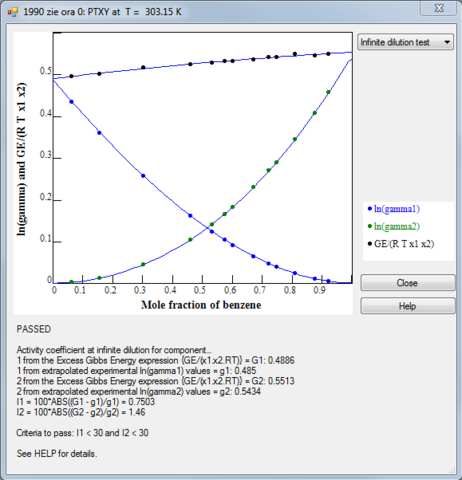ThermoData Engine
ThermoData Engine (TDE) provides critically evaluated thermodynamic and transport property data using the SOURCE database.
Critical evaluations are based on published experimental data, values predicted from molecular structure, and any data optionally supplied by the user.

TDE's inference engine combines the millions of experimental data points available through SOURCE with property prediction schemes and heuristics to emulate the evaluation process of a domain expert.
In one package, TDE is capable of generating recommended data compilations to order for hundreds of thousands of pure, binary, and ternary systems and for thousands of chemical reactions.
Features
documentation and user guides
NIST ThermoData Engine 103b
Pure Compounds, Binary Mixtures, Ternary Mixtures, and Reactions
System requirements
PC with Microsoft® Windows® XP, Windows Vista, Windows 7, Windows Server 2003, Windows Server 2008, Windows Server 2012, or Windows 10. At least 2 GBytes of memory is recommended.
Licensing Info
TDE is distributed by the Standard Reference Data Program.
- Information for 103a: Pure components database
- Information for 103b: Pure, binary, ternary components and reactions database
Citation Guide
TRC requests that works utilizing TDE include citations.
In-text:
Data provided via the NIST ThermoData Engine+(SRD#103a or #103b)+[version] was used.
Bibliography: depending on version, one of
NIST Standard Reference Database 103a: ThermoData Engine (Version). https://www.nist.gov/srd/nist-standard-reference-database-103a
NIST Standard Reference Database 103b: ThermoData Engine (Version). https://www.nist.gov/srd/nist-standard-reference-database-103b
Liability Statements
The data and other information in these computer files have been carefully extracted from the original articles by the authors and were checked for completeness by NIST/TRC personnel before posting. Neither the Journal publisher, nor its editors, nor NIST/TRC warrant or represent, expressly or implied, the correctness or accuracy of the content of information contained in these files, nor its fitness for any use or for any purpose, nor can they, or will they, accept any liability or responsibility whatever for the consequences of its use or misuse by anyone. In any individual case of application, the respective user must check the correctness by consulting other relevant sources of information.
The National Institute of Standards and Technology (NIST) uses its best efforts to deliver a high-quality copy of the program and database and to verify that the methods and data contained therein have been selected on the basis of sound scientific judgment. However, NIST makes no warranties to that effect, and NIST shall not be liable for any damage that may result from errors or omissions in the program and database.
Contacts
-
(303) 497-5549
-
(303) 497-4124

